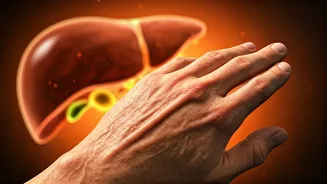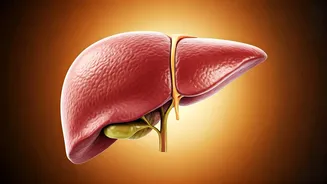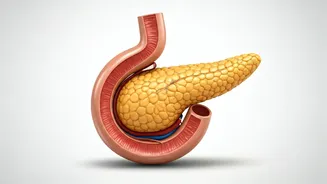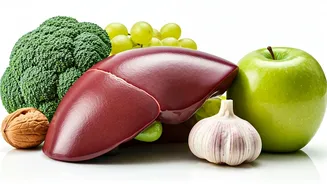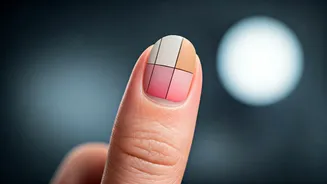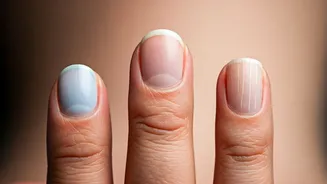Hand Clues to Liver Health
The liver, a vital organ, plays a crucial role in various bodily functions, including detoxification and nutrient processing. Because of its diverse functions, signs
of liver distress can sometimes be observed in unexpected places, like the hands. Various changes in hand appearance can signal potential liver problems. These changes are not always a definitive diagnosis, but they can be important clues. Observing these subtle signs can prompt you to seek medical attention, enabling early diagnosis and treatment. This proactive approach can significantly impact your liver health outcomes. Awareness of these visual cues equips you with the knowledge to take charge of your well-being.
Palmar Erythema: Red Palms
Palmar erythema is characterized by unusually red palms, specifically on the fleshy areas at the base of the fingers. This redness often appears in patches and is caused by the dilation of blood vessels. Although it is commonly associated with liver disease, especially cirrhosis, it can also be linked to other conditions like pregnancy or rheumatoid arthritis. The severity of the redness can vary, ranging from mild pinkish hues to a deep, intense red. This condition arises due to hormonal imbalances and changes in blood circulation, both of which are impacted by liver function. When the liver is compromised, it may struggle to regulate hormones and effectively filter blood, affecting blood vessels and causing the palms to flush red. Consulting a doctor is essential for a proper diagnosis and understanding the underlying cause of this symptom.
Clubbing: Swollen Fingertips
Clubbing refers to the enlargement of the fingertips, causing the nails to curve downward. This condition, which develops over time, makes the fingertips appear bulbous. It is frequently associated with advanced liver disease, among other systemic illnesses. The exact mechanism behind clubbing isn't entirely clear, but it is believed that the buildup of fluids and other substances in the fingertips contributes to this effect. The gradual change in the appearance of your fingertips is a sign of long-term problems. The nails may become soft and the skin around the nail beds can appear shiny. As the condition advances, the angle between the nail and the cuticle increases. If you notice this, it is crucial to consult a healthcare provider.
Nail Changes and Liver Issues
Nail abnormalities can also provide clues about liver health. Several distinct changes can manifest, reflecting the impact of liver disease on the body. For example, Terry's nails involve the majority of the nail appearing white, with a narrow, pink band at the tip. This is a common sign of cirrhosis and other liver diseases. Muehrcke's nails present with white bands running horizontally across the nail, also linked to liver problems, particularly hypoalbuminemia. Beau's lines, which appear as horizontal ridges or grooves on the nails, can occur due to periods of impaired nail growth, often associated with a systemic illness like liver disease. The condition of your nails can provide a window into the health of your liver.
Jaundice and Hand Appearance
Jaundice, characterized by the yellowing of the skin and the whites of the eyes, is a direct indication of liver dysfunction. When the liver is unable to process bilirubin effectively, this yellow pigment accumulates in the bloodstream, leading to jaundice. While this is primarily visible in the skin and eyes, it can also affect the hands, causing them to appear slightly yellowed. This can be more difficult to notice in individuals with darker skin tones, but it's still an important indicator. Along with the yellowing, the skin may also feel itchy due to the buildup of bile salts. Jaundice is a serious symptom that needs prompt medical attention. A healthcare provider can carry out tests to find out the reason and suggest appropriate treatment.
Other Associated Symptoms
Aside from the visual cues on your hands, several other symptoms can indicate underlying liver problems. These can include fatigue, abdominal pain and swelling, changes in urine color (dark urine) and stool color (pale or bloody stools). Additional signs include unexplained weight loss, loss of appetite, and easy bruising or bleeding. The presence of these symptoms, either individually or collectively, can indicate liver damage. If you experience these symptoms, it is vital to consult a healthcare professional. They can conduct tests to determine the status of the liver and suggest an effective treatment plan. Early diagnosis and intervention can greatly improve your chances of recovery and overall well-being.
